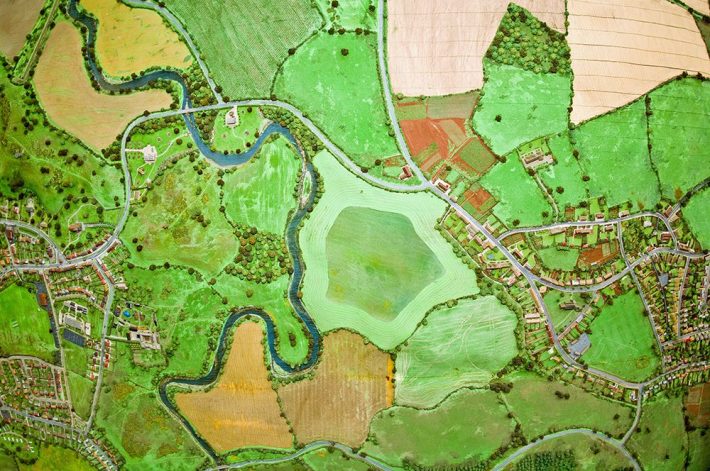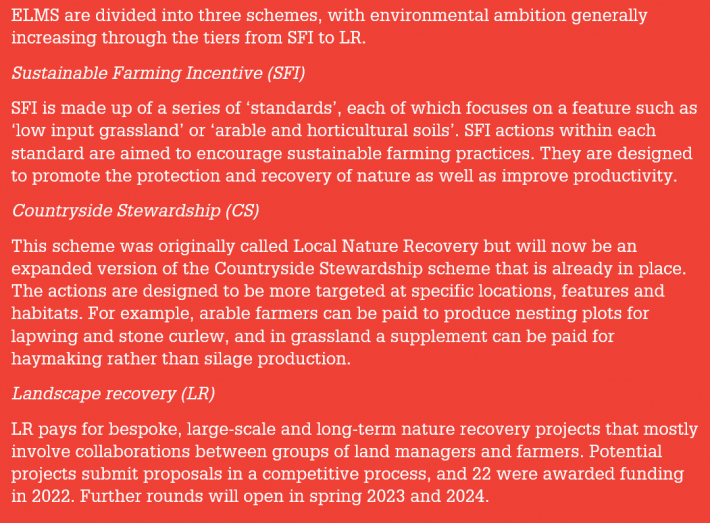Part 1: What will the Environmental Land Management Schemes pay for?
On 26 January, Defra announced a large number of the actions and payment rates for their new Environmental Land Management Schemes (ELMS), in the biggest change in farming and land management policy in England in 40 years. In the first of this two-blog series, we look at the aims of the new policy.

There was a major announcement of actions and payment rates for SFI and CS on 26 January. Whilst Defra will continue to ‘expand and refine’ the schemes, with a view to finalising the schemes in 2024, this announcement demonstrates the priorities and workings of the policy. Here, in the first of a two-blog series, we summarise the aims of ELMS. In the second instalment, we will cover whether there are any early indications for what the implications are for English nature and landscapes.
What are ELMS?
For decades, the UK’s agricultural policy has been directed by the EU’s Common Agricultural Policy (CAP). As agricultural and environmental policy are devolved, following Brexit each of the nations of the UK is developing new agricultural policy and payment schemes. England is transitioning to Environmental Land Management schemes (ELMS), which will pay farmers and land managers to carry out actions that provide ‘environmental and climate goods and services’. In its announcement, Defra uses the term ‘farmers and land managers’, to emphasise that these schemes are open to people who do not produce food as well as farmers.

Stated aims of ELMS
The information here lays out the aims of ELMS stated by Defra, and is not a comment on the merits of these aims, or the likelihood of them being achieved.
Shift from area-based payments to payments for environmental goods and services
The main difference between ELMS and the funding schemes financed by the CAP is that Defra is planning to completely phase out area-based payments. Under the CAP, farmers received payments based on how much land they farmed, which were paid through the Basic Payment Scheme (BPS) in England, by the Rural Payment Agency (RPA). BPS will end after 2023, but farmers will receive ‘delinked payments’ based on the amount they received under BPS. These will decrease year-on-year from 2024 to 2027. This is a very big change because BPS made up the vast majority of the payments made by the RPA, consisting of £1.7 billion of the total £1.8 billion in 2021-2022.
Payments not subsidies
Under ELMS, funding will be distributed as payments for specific actions that are supposed to lead to the production of environmental goods and services, rather than as subsidies to the production of food, timber or other goods, which are sold in private markets.
Flexibility of agreements
Rather than a whole farm approach, farmers and land managers can ‘select a combination of actions in SFI and CS that works for them’. What this means is that farmers and land managers effectively have a menu of actions to choose from for land across their properties, and can mix and match actions across their land. The flexibility of the agreements is supposed to contribute to increasing uptake, by acknowledging that farm settings are different at a local scale.
Maximise take-up
A big focus of ELMS is to maximise take-up, both in terms of the number of farmers and land managers who can take part, and the area land that will be covered by agreements. By 2028, the stated target is to have ‘at least 70,000 [agreements] in our schemes, covering 70% of farmed land and 70% of all farms’. It is unclear exactly how many actions must be ongoing on a particular farm or field for it to be included in this target.
Several aspects of the policy are designed to contribute to this. Firstly, the flexibility of the scheme is partly there to encourage farmers and land managers who may not enter into agreements that require comprehensive whole-farm planning to get involved. Secondly, the agreements will be open to land managers as well as farmers. Therefore, people who own or manage land do not have to be producing food to receive ELMS payments.
Thirdly, there has been an attempt to make SFI and CS agreements more accessible to tenant farmers. Tenants do not require landlord consent to enter into SFI agreements. CS agreements do require landlord consent, but tenants can enter into agreements that are longer than their tenancy with landlord sign off. Farmers on common land can also enter into agreements.
Read Part 2 here, where we discuss whether ELMS are likely to achieve their environmental objectives.
Like what we stand for?
Support our mission and help develop the next generation of ecologists by donating to the British Ecological Society.